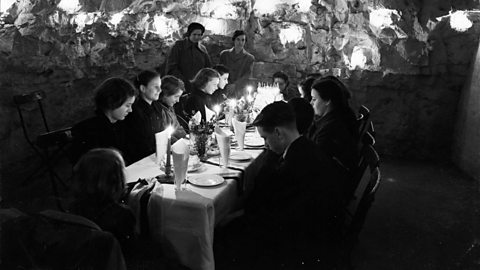Some bridges simply get you from A to B. Others do it in style.
Often, a bridge can become a tourist attraction itself. They can reach extraordinary heights and lengths, and utilise cutting-edge engineering or time-tested indigenous techniques.
±«Óătv Bitesize has taken a look at some of the world’s most intriguing bridges that you might not have heard of.
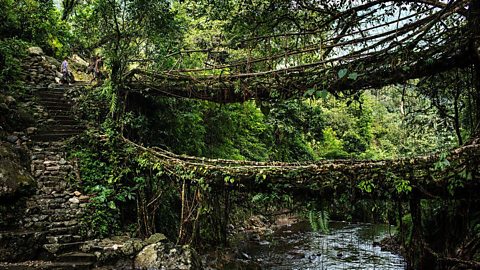 Image source, Bloomberg
Image source, BloombergLiving Root Bridges, India
The north-eastern state of Meghalaya in India, is one of the wettest places on Earth. Each year during the monsoon season (June to September) this mountainous region can receive up to 6 metres of rainfall, causing rivers and streams to swell with water. Eventually, they become impassable.
For the local Khasi people, this was a problem. But around 180 years ago, they came up with a solution — creating bridges out of the roots of the Indian rubber tree (Ficus elastica). Canes of bamboo are tied between the trees and across the water. These act as scaffolding for the tree roots to grow along, until they meet in the middle and become entwined. It’s a process that takes decades to complete but produces durable, stable and sustainable bridges that only grow stronger as they age.
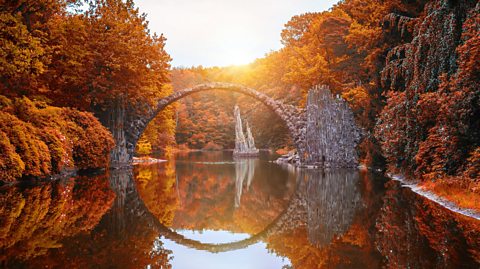 Image source, DaLiu
Image source, DaLiuThe Devil’s Bridge, Germany
Known in German as the RakotzbrĂĽcke, this stone bridge is stunningly pretty. When reflected in the still water below, it appears to form a perfect circle. In order to preserve the bridge, visitors are not allowed to cross.
This type of bridge can be found throughout Europe, with many examples dating back to medieval times. Typically, devil’s bridges have legends attached to them about how the devil assisted in their construction, often in exchange for something. They look so precarious that it was felt that something otherworldly must be involved. This particular bridge, however, was built in the 19th Century, having been commissioned by a local knight.
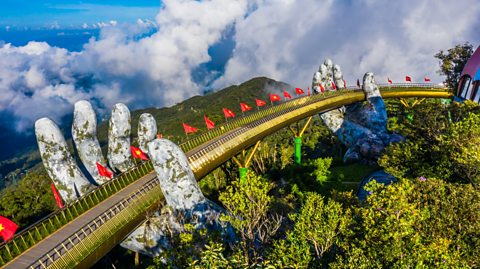 Image source, NgKhanhVuKhoa
Image source, NgKhanhVuKhoaThe Golden Bridge, Vietnam
Sat atop a mountain near the city of Da Nang in central Vietnam, this striking bridge opened in June 2018.
At 150 metres long, the curving golden pedestrian bridge was designed by the architect to mimic a golden thread being held up by a god’s hands. While these hands may appear to be made of carved, weathered ancient stone, they are actually a combination of steel mesh and decorated fibreglass.
The bridge can be reached by the world’s longest nonstop single-track cable car ride and it is close to a faux medieval village, built by the French during colonial rule.
 Image source, NgKhanhVuKhoa
Image source, NgKhanhVuKhoa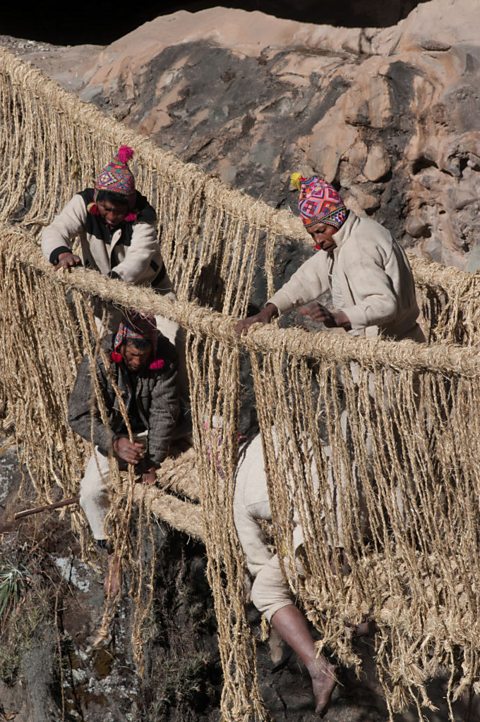 Image source, VW Pics
Image source, VW PicsQ'eswachaka, Peru
For the past 600 or so years, a rope bridge made of grass has hung over the Apurimac river in the Cusco region of Peru. Following the Incan tradition, each year the bridge is thrown into the water below, where it slowly rots away. In its place, a new bridge is woven and hung.
Members of local communities create the 30-metre-long bridge by weaving together long blades of hardy grass (q’oya), to form thin cords. To make the grass pliable, it must first be beaten with a stone and soaked in water. The cords are then twisted together to create six strong cables.
These are securely attached to stones on either side of the canyon, and stretched by teams of men to ensure that there is enough A pulling force which makes an object extend.. Once complete, the communities celebrate with traditional festivities.
Kazungula Bridge, Botswana and Zambia
At first sight, this bridge may appear relatively ordinary. Built to ease congestion by replacing a slow vehicle ferry service across the Zambezi River, the 923-metre-long bridge links Botswana to Zambia.
What makes this bridge unusual is its shape, which wasn’t chosen for the aesthetics. Within the river itself, the borders of four different countries meet in various configurations. A curved bridge was necessary in order to avoid straying across the border into Zimbabwe.
 Image source, VW Pics
Image source, VW Pics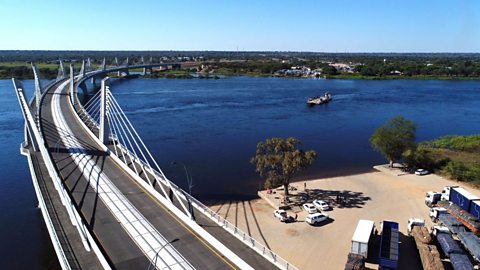 Image source, MONIRUL BHUIYAN
Image source, MONIRUL BHUIYAN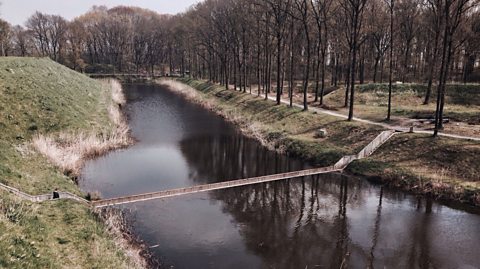 Image source, Monika Kanokova / EyeEm
Image source, Monika Kanokova / EyeEmMoses Bridge, the Netherlands
Something of an optical illusion, from a distance it looks like pedestrians on the bridge walk through parted water, which is why it is named after Moses.
In the 17th Century, the Dutch built a defensive system known as the West Brabant Water Line, which enabled them to flood low-lying areas of land. The water would be deeper enough to make it slow and awkward to wade through, but shallow enough that boats couldn’t be used.
As part of the fortification’s restoration, a bridge was needed to allow visitors to reach the fortress, Fort de Roovere. However, the architects felt that it didn’t seem right to design a traditional bridge to cross a moat, given its historical purpose. Instead, they sunk the bridge into the moat, allowing it to blend in.
 Image source, Monika Kanokova / EyeEm
Image source, Monika Kanokova / EyeEmSix of the world’s most amazing railway journeys
From the highest railway to one of the longest, these aren't any ordinary train journeys.

The Seven Wonders of the World quiz
From the ancient to the modern, how much do you know about these famous landmarks?
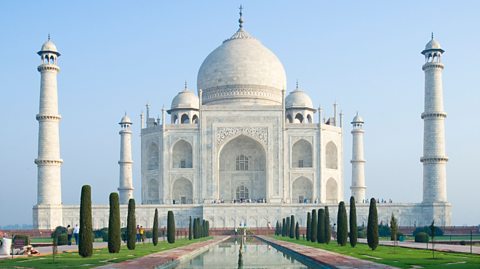
The hidden worlds beneath the UK's feet
Spooky vaults, unseen rivers and caves which sheltered thousands from the Blitz
